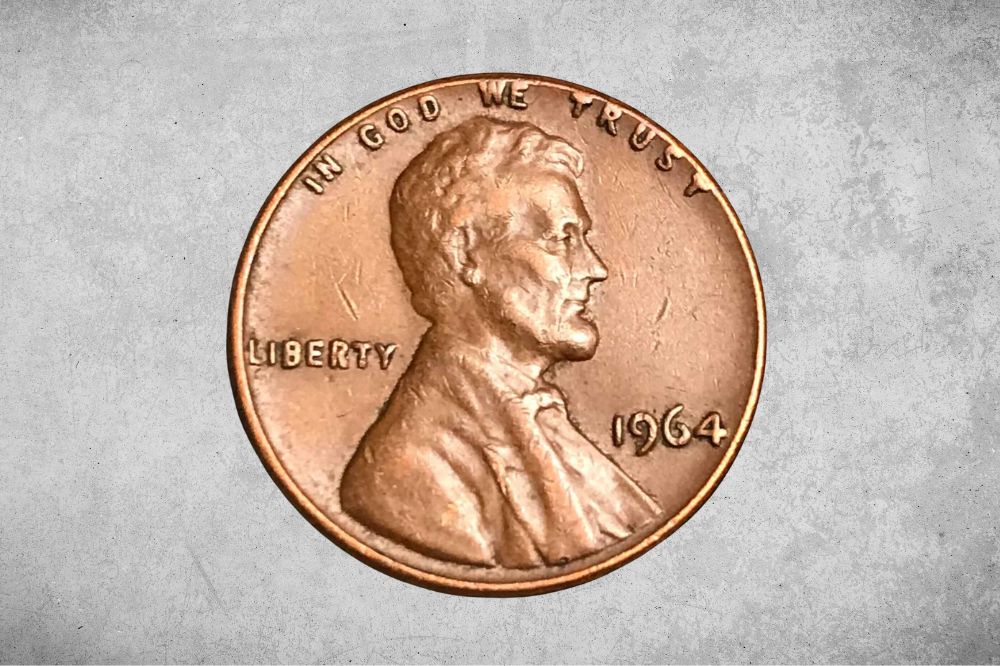The 1964 penny is a rare coin in United States history that collectors highly value. Its worth depends on its condition, with uncirculated examples worth approximately $1 to $2, while examples of circulated items are worth approximately $0.01 or even lower than that. The 1964 D penny can get you up to $10,000 or more at auction, depending on its condition, patina, and grade.
PCGS reports that a classified coin like MS68 SMS can be worth up to $27,500. This article provides information on this U.S. coin’s intrinsic and market value, including how coins are graded today and how they’re made.
1964 Penny Details
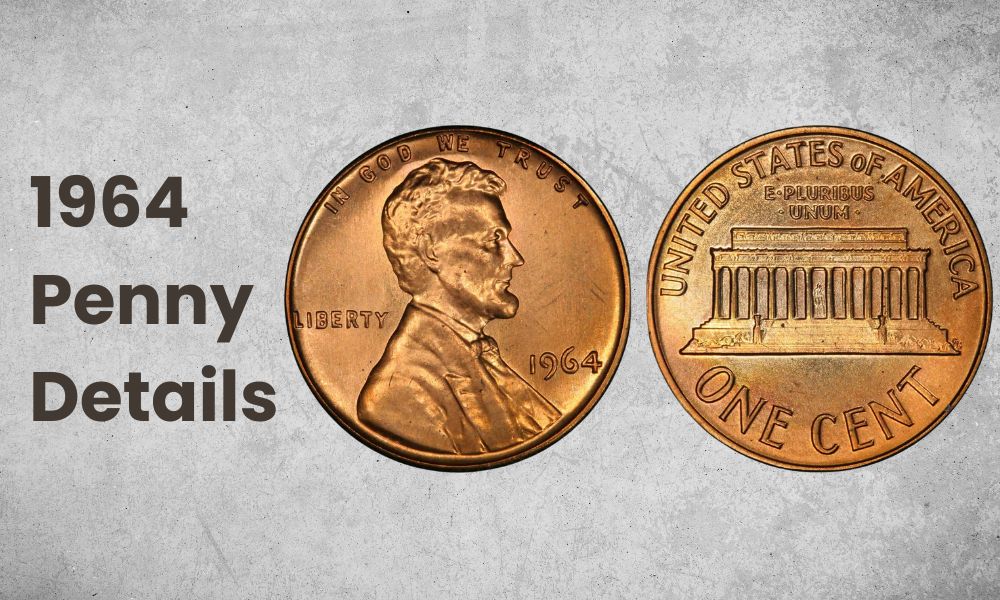
- Composition: 95% copper, 5% zinc
- Thickness: 0.0598 inches (1.52 mm)
- Type: Lincoln Penny
- Edge: Plain
- Total Weight: 3.11 grams (or over)
- Face Value: $0.01
- Diameter: 0.750 in. 19.05 mm
- Quantity Minted: 2,648,575,000
- Year: 1964
Reverse Design
You’ll find that this penny has distinctive inscriptions on it, which includes “E Pluribus Unum” and “United States of America” inscribed on the upper collar right below it. On the lower collar are the words “One Cent.” The reverse side of the 1964 penny is designed by Frank Gasparro and has the Lincoln Memorial. His initials, FG, can be found on the memorial steps. The statue of Lincoln is visible through the central pillars on well-defined coins.
Obverse Design
The 1964 penny has the statement “In God We Trust” right about the head the portrait of Abraham Lincoln that is right facing on its front side. On the left side of the front side, the word “Liberty” appears behind Lincoln, while the date “1964” and mint mark are inscribed on the right side.
The sculpture’s design draws inspiration from a desk plaque crafted by Victor Brenner in 1907. It should be noted that the bulk of these coins were produced in 1965. Victor David Brenner, the designer of the front side, is identified by his initials “VDB,” found on the portrait’s shoulder. Brenner is also responsible for the original design of the penny’s reverse side.
1964 Penny Value Chart |
||||
| Mint Mark | Proof
(PR 65) |
Uncirculated
(MS 60) |
Mint State
(MS 65) |
Good (G 4) |
| 1964 No Mint Mark Penny Value
( San Francisco and Philadelphia) |
$1.71 |
$0.17 |
$0.33 |
$0.02 |
| 1964 D Penny Value
(Denver) |
No D Proofs
|
$0.17 |
$0.33 |
$0.02 |
1964 Penny Value and Varieties Guides
The 1964 penny is a fascinating coin that collectors love to explore. Although all of these pennies have the same mint date, many varieties can be found. Some were minted in 1964, while others were produced the following year.
Additionally, the penny’s composition changed in the early 1960s, leading to further variations. In this section, we’ll take a closer look at the different types of 1964 pennies and what makes each one unique.
1964 Penny With No Mint Mark Value
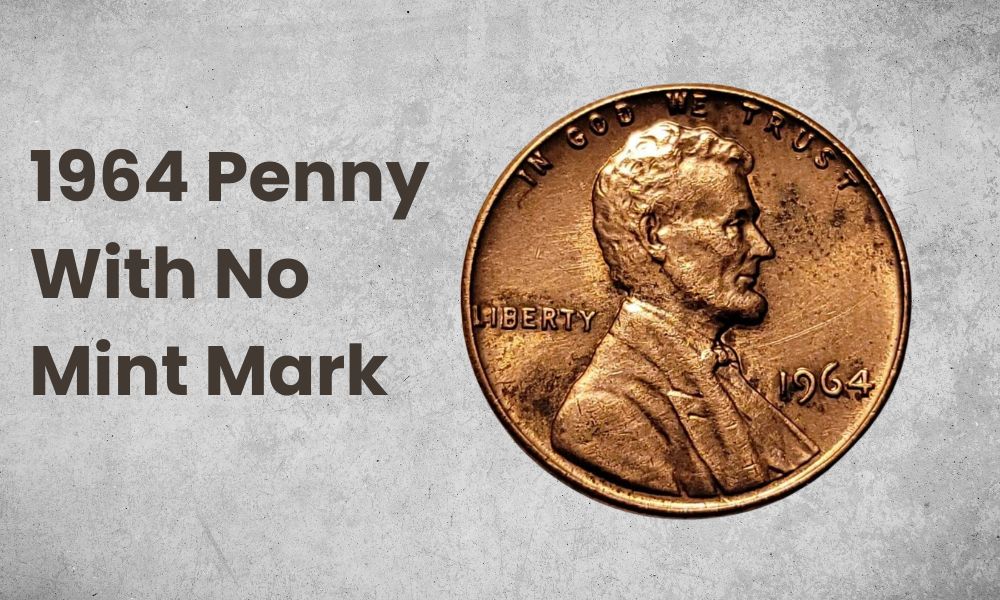
- Type: Lincoln Penny
- Quantity Minted: 2,648,575,000
- Composition: 95% copper, 5% zinc
- Thickness: 0.0598 inches (1.52 mm)
- Total Weight: 3.11 grams (or over)
- Minted in: Philadelphia, San Francisco
- Diameter: 0.750 in. 19.05 mm
- Face Value: $0.01
- Year: 1964
- Edge: Plain
In 1964, the Philadelphia Mint produced over 2.4 billion coins, even though a billion coins were produced in 1965. The mint also made almost 4 million proof coins that year. The value of coins without a mint mark is approximately 2 cents and varies based on the current market price of copper melt. However, due to the uncertainty of whether the coins were produced in San Francisco or Philadelphia, some can be sold for more than $10,000.
1964 P Proof Penny Value
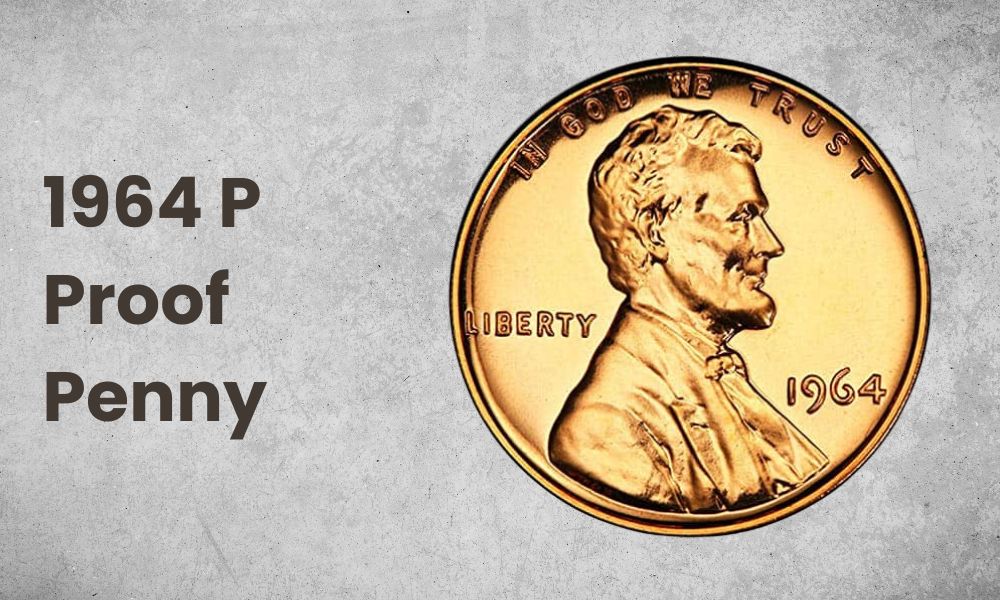
- Type: Lincoln Penny
- Quantity Minted: 3,950,762
- Composition: 95% copper, 5% zinc
- Thickness: 0.0598 inches (1.52 mm)
- Total Weight: 3.11 grams (or over)
- Minted in: Philadelphia
- Diameter: 0.750 in. 19.05 mm
- Face Value: $0.01
- Year: 1964
- Edge: Plain
Coins can be categorized as either PR or PF. PR denotes proof coins that are specifically produced for collectors. These coins are made with burnished planchets and specially processed dies, resulting in a high level of detail and definition that gives them a unique shine.
PF stands for Proof-Like. These coins may have a similar appearance to proof coins, but they are not made with pre-burnished planchets. In 1964, almost 4 million proofs were produced without mint marks in Philadelphia. A PR 67 D-CAM coin has a value of $200, while an unsold 1964 (P) PR 70 D-CAM was priced at $12,500.
1964 Special Strike SMS Penny Value
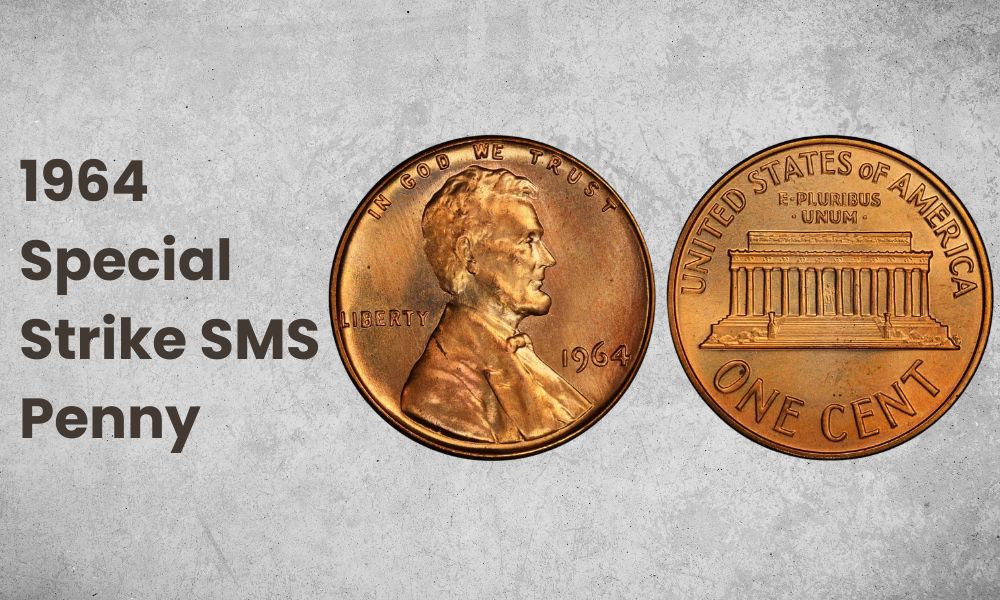
- Type: Lincoln Penny
- Quantity Minted: Approximately 30 were minted
- Composition: 95% copper, 5% zinc
- Thickness: 0.0598 inches (1.52 mm)
- Total Weight: 3.11 grams (or over)
- Minted in: Philadelphia
- Diameter: 0.750 in. 19.05 mm
- Face Value: $0.01
- Year: 1964
- Edge: Plain
In 1964, the United States Mint had to find a solution to the scarcity of coins caused by silver hoarders who removed all 90% of silver coins from circulation. As a result, they temporarily suspended the production of proof sets. They instead made it a point to focus on producing a collectors’ product, the SMS, also known as the “Special Mint Set”. The 1964 SMS penny was minted in only 30 coins, making it rare and expensive. The edges are plain, and the composition resembles previous penny types. This is the most valuable type of 1964 Penny.
1964 “D” Penny Value
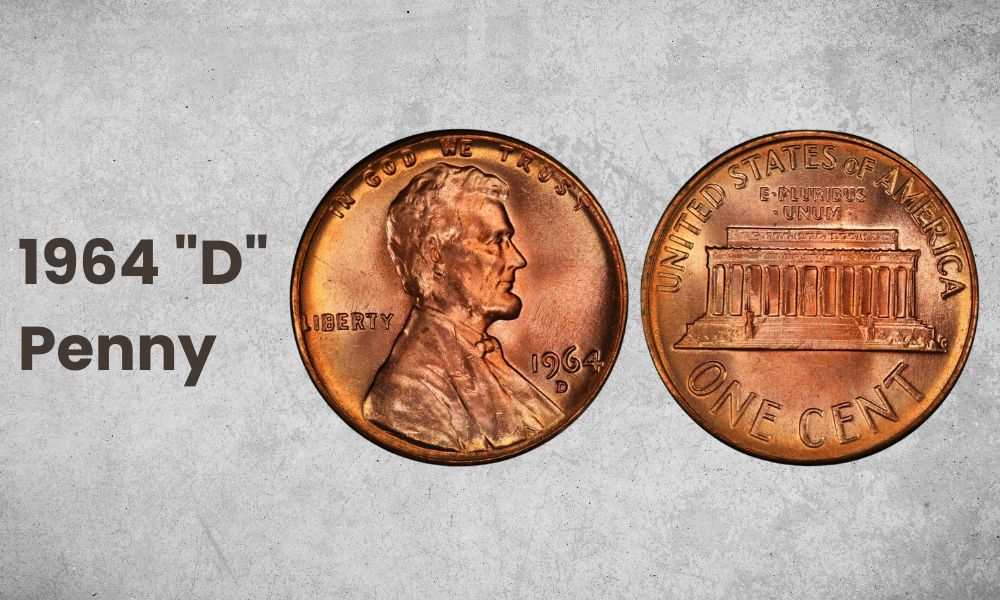
- Type: Lincoln Penny
- Quantity Minted: 4,103,183,000
- Composition: 95% copper, 5% zinc
- Thickness: 0.0598 inches (1.52 mm)
- Total Weight: 3.11 grams (or over)
- Minted in: Denver
- Diameter: 0.750 in. 19.05 mm
- Face Value: $0.01
- Year: 1964
- Edge: Plain
In 1964, approximately 3.8 billion pennies were produced, but nearly 2 billion of those were actually minted in 1965. While most of these coins bear the 1964 stamp, only the 1964 D Penny with a mint mark has any significant worth.
Recently, a 1964 D Penny graded at MS 67 RD was auctioned off for $456, while three unsold 1964 D Pennies were graded at MS 67+ by PCGS and valued at $4,750.
1964 Penny History
In the UK and the US, a penny refers to a 1-cent coin. American pennies, named after Abraham Lincoln since 1909, feature his portrait on the front. Prior to Lincoln’s depiction, US currency depicted symbolic sculptures representing concepts such as liberty and peace rather than identifiable human subjects.
Over time, the penny’s back design has changed, but Lincoln’s portrait has remained a consistent feature on the front. In 1964, pennies featured the Lincoln Memorial on the back and Lincoln’s face on the front, referred to as Memorial Cents. Despite being stamped with a 1964 date, most of these pennies were coined in 1965, with only 3.8 billion out of 6.5 billion carrying mint marks.
In 1964, San Francisco coins joined the pennies from Philadelphia in having no mint marks. Mary Adams, the Minting Director, extended this practice to other coins as she believed it would address a coin shortage. This led to the minting of numerous coins marked 1965 in 1966, with only a million pennies from Philadelphia being minted in 1965.
The absence of mint marks on all coins minted that year means it is impossible to differentiate them from those coined in 1966. Thus, any verified coins, despite their scarcity, are deemed invaluable.
1964 Penny Grading
The coin is evaluated in detail to determine its grade, which is used to establish a universal value. There are various grading systems and services that can be used to assess a coin and determine its worth.
1964 Penny Errors
You might be surprised to learn that some damaged 1964 Pennies can actually be quite valuable due to certain coin errors. These errors can occur during the minting process. Discovering a mistake in your penny could be your ticket to unexpected fortunes! This section will explore some of the most common coin flaws, discussing how they are made and how much they are worth.
1. 1964 Penny Punched Over a 1963 Penny Error
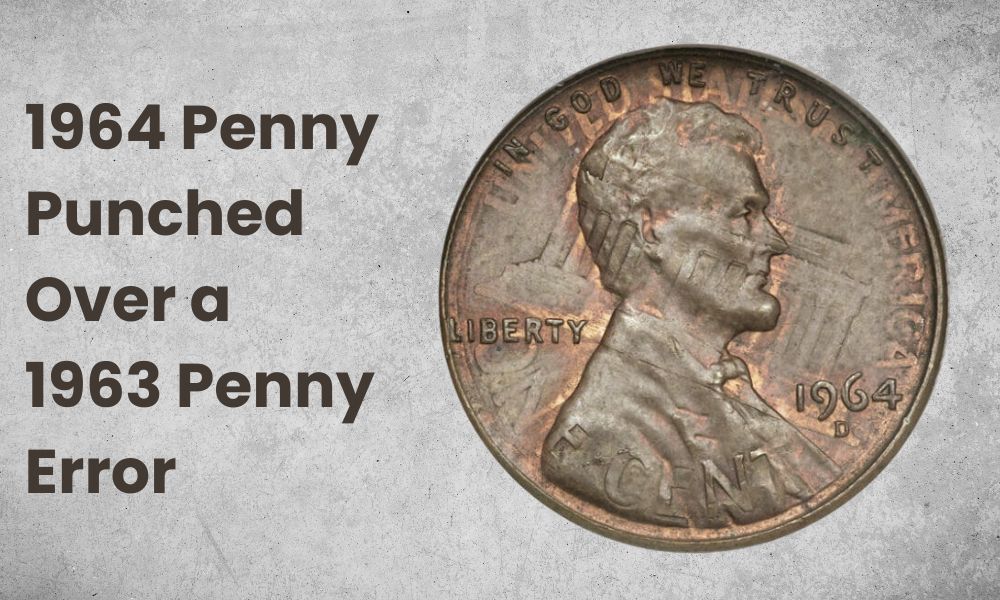
In 1965, most pennies minted were actually dated 1966. In contrast, the majority of 1964 pennies didn’t emerge until the next year. There is a rare occurrence of a 1964 D penny accidentally struck on a 1963 D penny, so both the reverse memorial silhouette and the obverse Lincoln can be seen on the same side of the coin. This mistake is extremely valuable, with one example selling for $4,000.
2. 1964 Penny Struck on a Clad Dime Planchet Error
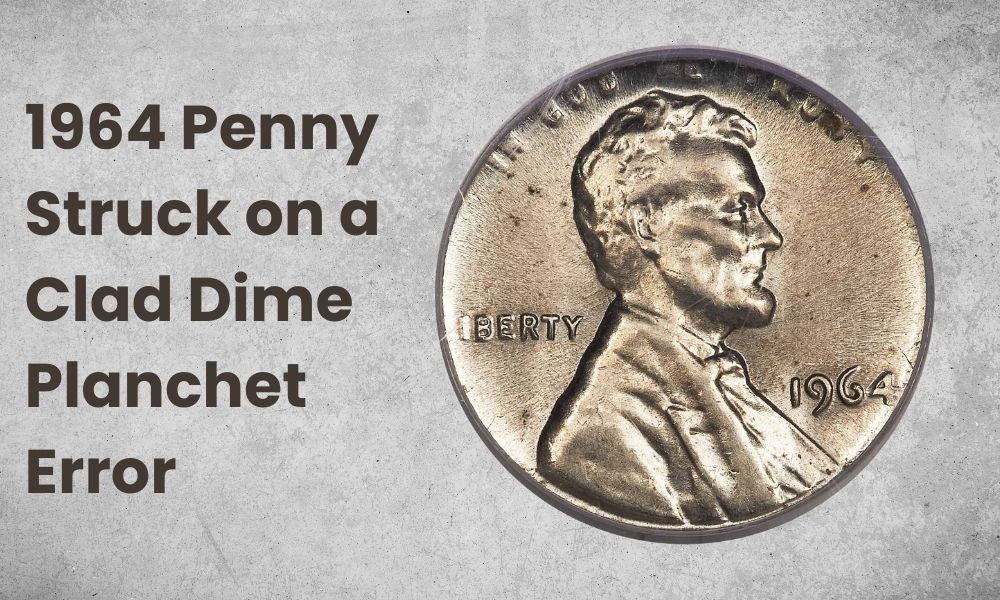
In 1964, a penny was mistakenly struck on a clad dime planchet, which resulted in a coin that weighs less than usual and appears truncated, with some words or features missing. The coin was intended for an Eisenhower Dime but became a 1c coin. This rare error sold for more than $4,800 in MS 65 condition.
3. 1964 MS 65 Deep Die Cap and Triple Strike Penny Errors
Two 1964 penny errors sold for approximately $1,100 each. One of them, graded MS 65, has a triple strike error on the obverse side, showing three images of Lincoln, with two being 60% and 70% off-center. The other penny, graded MS 66, has a deep die cap error on the obverse side, causing it to appear sunken while the reverse side is raised.
4. 1964 Penny Clipped Planchet Error
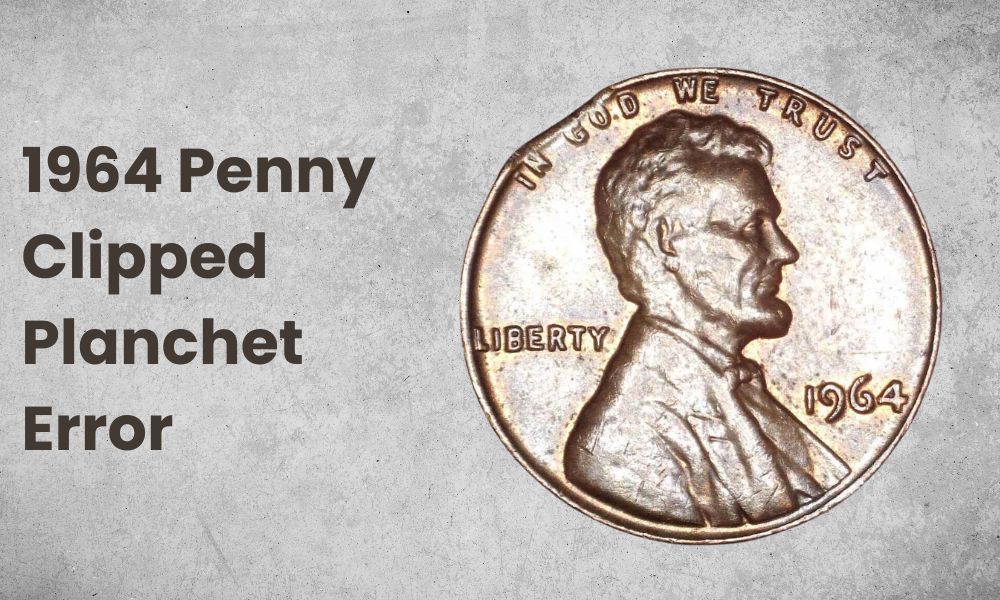
A clipped coin is formed when a portion of its surface is eliminated or removed. This can occur during the minting process, when the planchet, the disc from which coins are made, is sliced, or when the coin is caught in machinery and chopped. The value of clipped coins can vary widely, with some selling for as low as $6.
5. 1964 Penny Struck Over a 1951 Penny Error
The process of creating coins involves stamping a blank metal disk — known as a planchet — with a specific design. However, unique situations can arise during the coin-making process, such as when a coin is struck on top of another coin that has already been minted.
The 1964 D Penny is one such example. It was struck on top of a 1951 D Penny, and as a result, this rare coin displays a nearly faded 1951 D in the upper left obverse and a Liberty figure on the right that is also faded. Collectors highly covet this coin, and it is exceptionally valuable in AU 58 condition. In fact, one such coin fetched over $1,900 at auction.
6. 1964 Off-Centre Penny Error
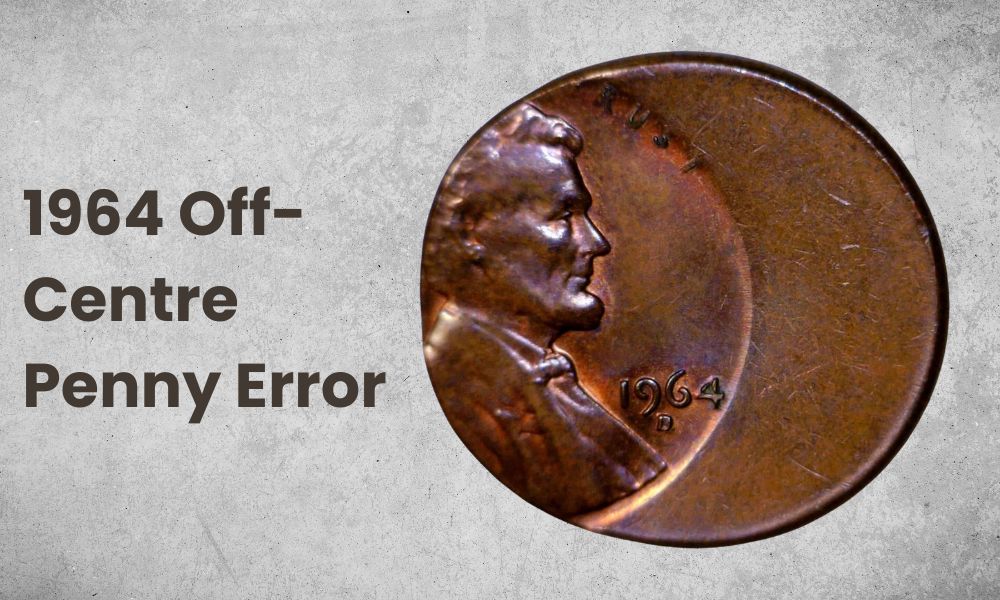
Despite depicting only a portion of Lincoln’s face with the 1964 mint date and D mint mark, while leaving the rest of the coin blank, the off-center penny from 1964 is frequently overvalued. The reverse side of the coin displays a partial image of America, the letter T, and a segment of the memorial. Despite its dramatic flaw and perceived rarity, this coin error is only worth a few dollars.
7. 1964 Penny D/D RPM Error
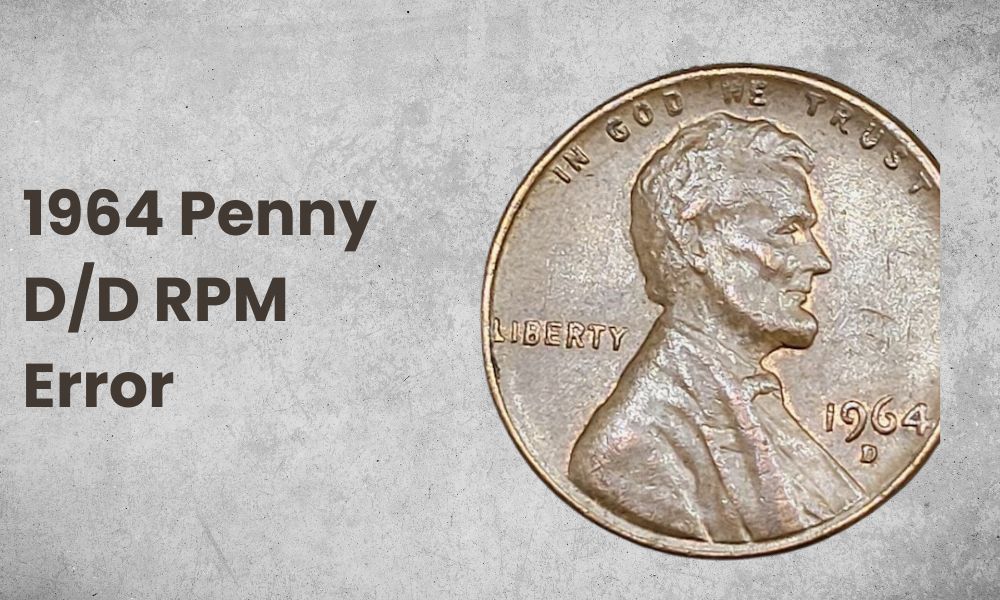
RPM is the abbreviation for “re-punched mint mark,” which is an error that arises when a mint mark is punched onto a coin multiple times, leading to a slight shift in the mark. This type of error was prevalent until 1989, after which mint marks were added manually using a handheld punch.
8. 1964 Penny Obverse Error: Cloth Strike-Through Variations
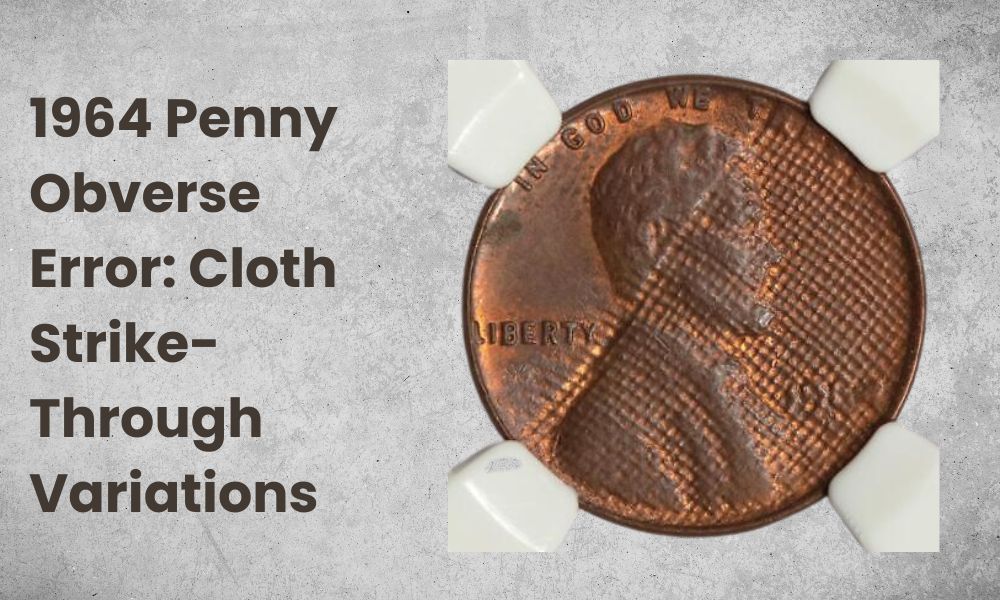
During the process of minting coins, errors can occur such as a strike-thru error. This happens when foreign objects make their way into the stamping process. One example of this type of error is the 1964 penny cloth strike-thru obverse error, where a piece of clothing material got stuck on the penny, blurring the features of Lincoln and leaving a pattern resembling the texture of the fabric on the coin. This specific coin was sold on an auctioning site for about $250, which is significantly more than its face value of one cent.
1964 Penny FAQ
Is the 1964 penny worth anything?
The 1964 penny is valued at approximately $0.15 with an MS-63RB grade. The 1964 penny without a mint mark and the 1964 D penny are also valued at around $0.15 in uncirculated condition. However, some rare 1964 SMS pennies can be worth up to $15,600.
How to determine if a penny from 1964 is an SMS penny
The 1964 SMS Lincoln cents have a unique finish that is smooth and satin-like, with well-struck fields that are clean and free of major nicks or scratches. Additionally, the edges of most 1964 SMS coins are square and sharp.
Are 1964 coins rare?
The 1964 and 1964-D nickels had a combined mintage of over 2 billion. While the 1964 nickel is a common issue, some rare varieties can increase their value in the marketplace. The coin’s worth is determined by factors such as the mint facility, grade, finish, and variety.
